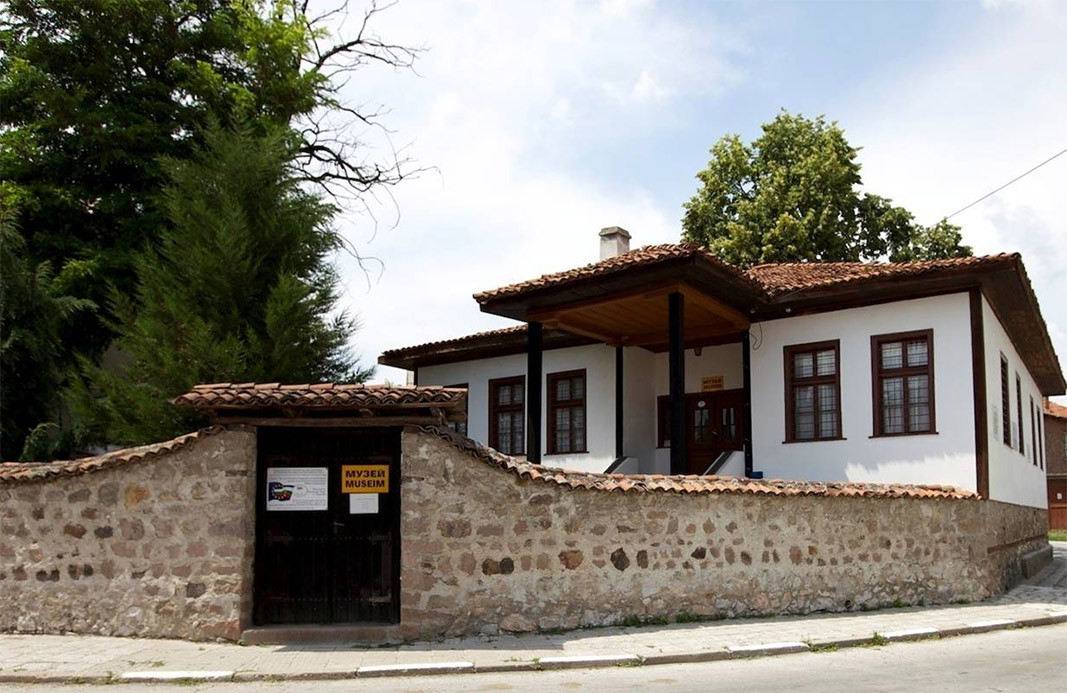 4
4
Immediately after the bloody suppression of the April Uprising in 1876 against the Ottoman rule, prominent European public figures initiated a campaign in defense of the Bulgarian population. Among them was a woman who inscribed her name in golden letters in the memory of the Bulgarian nation.
This was Lady Emily Ann Strangford. The English aristocrat arrived in Bulgaria shortly after the tragic end of the April uprising and engaged in a noble and completely selfless cause. Her most remarkable achievement is the six hospitals she manages to furbish with equipment using the nearly £ 30,000 she herself raised. One of these hospitals was located in the village of Radilovo. Nowadays, as a token of gratitude, its residents have turned the building into a museum with a small collection dedicated to their benefactress.

But who was Lady Strangford?
"We know of her life that she was from high society, the daughter of a famous admiral. She was born in 1826 and she loved to travel. She wrote the book “Journeys to the East” and fell in love and married her reviewer, Lord Percy Strangford. He was a diplomat in Constantinople, and he was an outspoken Bulgarophile. The Lord knew Bulgarian history in detail and willingly helped many Bulgarians survive these difficult times. Percy died before the April Uprising, but bequeathed to his wife his love for the Bulgarians. Shortly afterwards, Emily organized a large-scale charity campaign in England, added her own savings and arrived here to help,” says Marena Vachkova, head of the Museum Collection in the village of Radilovo.
In the region of Southern Bulgaria, Lady Strangford travelled from village to village, meeting with locals and talking to them, trying to understand what they needed. She managed to finance the construction of timber workshops for the construction of houses. She distributed 110 rosary pots in the devastated villages in the Bulgarian Rose Valley. With the help of the Bulgarian population in the Pazardzhik region, she restored the homes of 5,000 Bulgarians and donated a huge amount of essential items to the needy population...
"When she passed through here, she saw that our village was completely burnt down. Then she decided to create a hospital in Radilovo, as well as in Batak, Perushtitsa, Panagyurishte, Karlovo and in the village of Petrich,” Marena Vachkova explains. “She attracted doctors and nurses - all volunteers from abroad who came to work in the new hospitals. The 18-year-old Croat, Sofia Nespach, arrived at the Radilovo Hospital. Unfortunately, the young woman was stricken with typhus the following year. She was buried in the hospital yard. Lady Strangford was proud of her six hospitals, which also served as kitchens to feed the afflicted population. The Englishwoman did not have children of her own, so she helped hundreds of orphans in Batak to find adoptive parents abroad”.
When she finally left Bulgaria, Emily adopted six Bulgarian girls and took them with her to England with the idea of providing them with an education and then helping them to return here to become teachers.
In 1887, Emily Strangford raised funds to build a hospital in Cairo. But on the way to the official opening ceremony, the lady loved by her contemporaries died on board the ship. This put an end to her path illuminated by generosity and goodness,
The memory of Lady Emily Ann Strangford is still alive to this day. Several streets in Bulgaria are named after her and there is a monument and a hospital in the town of Batak bearing her name. And in a lonely, sheltered garden in the town of Hissarya one can see a small monument to her. Engraved in it is the poem "On Lady Strangford" which Bulgarian national poet Ivan Vazov dedicated to her in 1876 as a sign of deep gratitude to the Bulgarian people.
Author: Veneta Nikolova
Photos: Lady Strangford Museum in the village of Radilovo
On October 26, the Bulgarian Orthodox Church marks the Day of Great Martyr St. Demetrius of Thessaloniki, considered one of the greatest saints. In Bulgaria, his name is also associated with the restoration of the Second Bulgarian..
Exactly a year ago, the Bulgarian Orthodox Church established a new holiday in the church calendar - the Glorification of the holy relics of Saint Euthymius, Patriarch of T a rnovo . According to church sources, the last..
They call Nikopol “the town of ages” because its history goes back thousands of years. It was founded as a settlement in the year 169 during the reign of Roman Emperor Marcus Aurelius. In 629, theByzantine Emperor renamed the town to Nicopolis, meaning..
The Museum of the Jewish People in Tel Aviv , Israel, today commemorates the 130th anniversary of the birth of Dimitar Peshev, a righteous man of the..
The Feast of the Epiphany - the entry of the Theotokos into the Temple - is one of the oldest and most revered feasts in the Orthodox world. It was..

+359 2 9336 661
